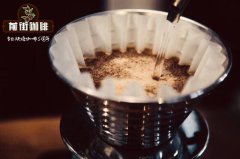What is the relationship between Gucci and Sidamo? the full fruity flavor of Gucci Coffee at high altitude

Professional coffee knowledge exchange more coffee bean information please follow the coffee workshop (Wechat official account cafe_style)
Introduction of Qianjie-Sidamo Guji G1 washing treatment
The beautiful and fertile hills of the Sidamo Guji area, which grow naturally, are more than 2000 meters above sea level, and the coffee beans are red and fruitful. Good at sun treatment, so that coffee to add honey-like sweetness and flowers, like a hundred flowers blooming garden, the flavor is comparable to rosy summer.
Ethiopia has two best producing areas, Yiragcheffe (Yegashafi) and Sidamo (Sidamo). Sidamo Coffee grows in the southernmost Ethiopian Plateau between 4600 and 7200 feet above sea level (Sidamo Province). It is a famous boutique coffee area in southern Ethiopia, bordering Kenya, southeast of Gemma, just south of the capital, usually sweeter and more popular, with an annual output of about 225000 bags / 60kg. The bean body is smaller than the Longberry, with gray in the green.
Ethiopia Geji, Ethiopia, also known as Huakui, is located in Hambella. Humbera is located in GUJI, the largest coffee producing area in Ethiopia, and the administration is subordinate to Oromia. Hambella is the highest coffee producing area in Ethiopia (Harrar is the highest in Ethiopia), facing the west and kochore across the mountain, and connecting with the shakiso,Uraga and Kerchaz producing areas of Guji in the east and south respectively.
Ethiopian Guji washing G1
Origin: Sidamo Guji
Treatment: washing
Variety: original species
Grade: G1
Baking degree: light baking (Agton value: 70)
Altitude: 1300-1600m
Flavor description: citrus, berries, grapes, jasmine
Knowledge point: Huakui, located in the southeast of Yejia Sheffield in the Sidamo producing area, belongs to Oromia Region → Guji Zone Guji → Shakisso woreda Shakiso → Hambella Humbera.
In short: Qianjie is a coffee research hall, happy to share the knowledge about coffee with you, we share unreservedly just to make more friends fall in love with coffee, and there will be three low-discount coffee activities every month. The reason is that Qianjie wants to make more friends drink the best coffee at the lowest price, which has been Qianjie's tenet for 6 years!
END
Important Notice :
前街咖啡 FrontStreet Coffee has moved to new addredd:
FrontStreet Coffee Address: 315,Donghua East Road,GuangZhou
Tel:020 38364473
- Prev

What are the characteristics of Sidamo coffee? the sweet and delicate taste of washed Gucci coffee.
Professional coffee knowledge exchange more coffee bean information please follow the coffee workshop (Wechat official account cafe_style) front street-Sidamo Guji G1 washing method to introduce the Sidamori Gucci producing area, Coffee Review website scores of more than 92, 94.95 high scores also have several times, the famous Yadi comes from Guji producing area. There are towering mountains and high mountains across the territory.
- Next

Ethiopia Xida Moguji Adora Simon specially treats sweet fruit bubble water
Professional coffee knowledge exchange more coffee bean information please follow Coffee Workshop (Wechat official account cafe_style) Front Street-Ethiopia Sida Moguji Adora Simon Special treatment Ethiopia has a long and profound history of coffee production and consumption, and is the country of origin of Arabica Coffee, the most famous and widely cultivated coffee variety in the world. Gujisidamo (Guji
Related
- Beginners will see the "Coffee pull flower" guide!
- What is the difference between ice blog purified milk and ordinary milk coffee?
- Why is the Philippines the largest producer of crops in Liberia?
- For coffee extraction, should the fine powder be retained?
- How does extracted espresso fill pressed powder? How much strength does it take to press the powder?
- How to make jasmine cold extract coffee? Is the jasmine + latte good?
- Will this little toy really make the coffee taste better? How does Lily Drip affect coffee extraction?
- Will the action of slapping the filter cup also affect coffee extraction?
- What's the difference between powder-to-water ratio and powder-to-liquid ratio?
- What is the Ethiopian local species? What does it have to do with Heirloom native species?

